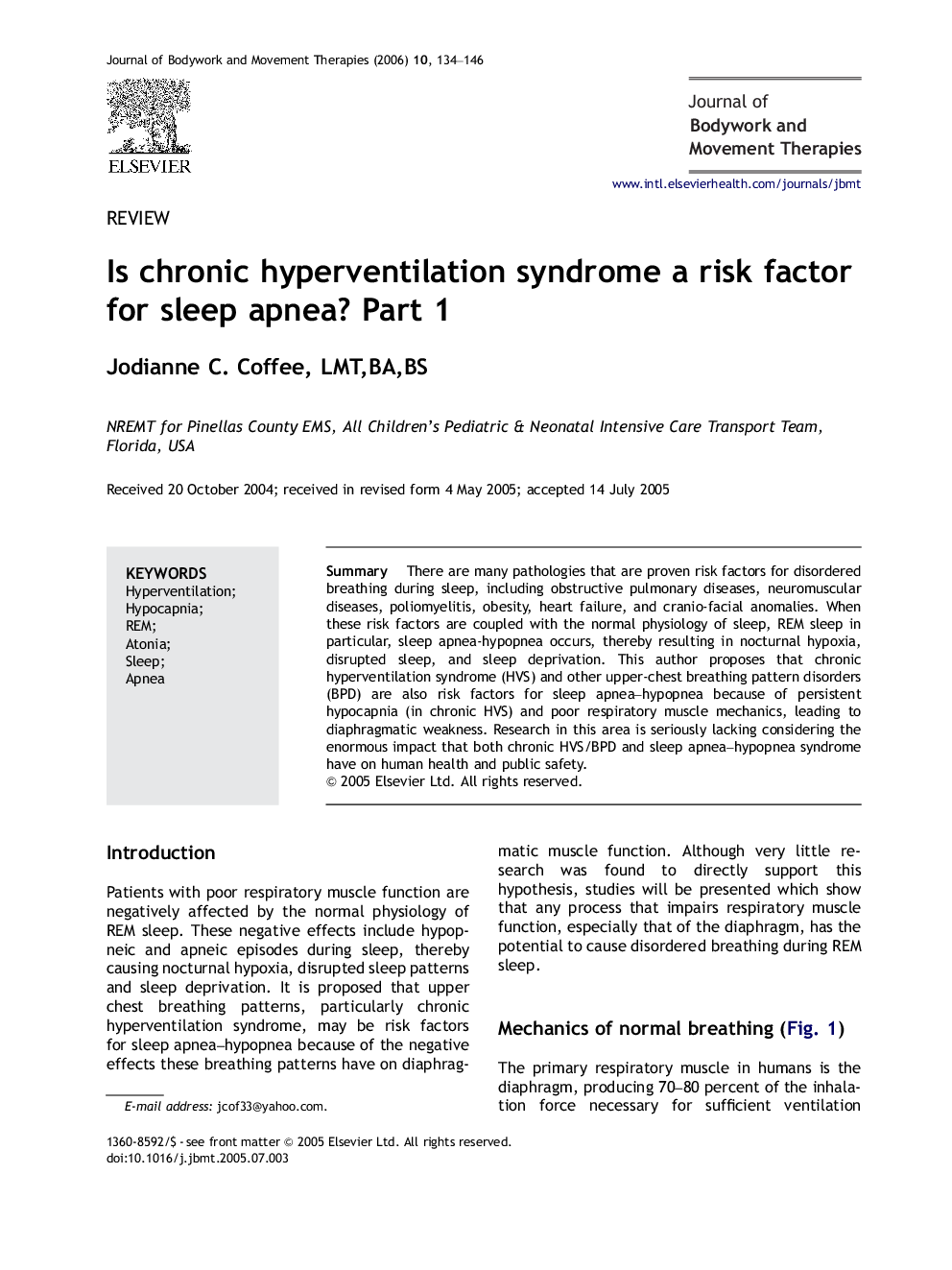| Article ID | Journal | Published Year | Pages | File Type |
|---|---|---|---|---|
| 2619735 | Journal of Bodywork and Movement Therapies | 2006 | 13 Pages |
Abstract
There are many pathologies that are proven risk factors for disordered breathing during sleep, including obstructive pulmonary diseases, neuromuscular diseases, poliomyelitis, obesity, heart failure, and cranio-facial anomalies. When these risk factors are coupled with the normal physiology of sleep, REM sleep in particular, sleep apnea-hypopnea occurs, thereby resulting in nocturnal hypoxia, disrupted sleep, and sleep deprivation. This author proposes that chronic hyperventilation syndrome (HVS) and other upper-chest breathing pattern disorders (BPD) are also risk factors for sleep apnea-hypopnea because of persistent hypocapnia (in chronic HVS) and poor respiratory muscle mechanics, leading to diaphragmatic weakness. Research in this area is seriously lacking considering the enormous impact that both chronic HVS/BPD and sleep apnea-hypopnea syndrome have on human health and public safety.
Related Topics
Health Sciences
Medicine and Dentistry
Complementary and Alternative Medicine
Authors
Jodianne C. LMT,BA,BS,
